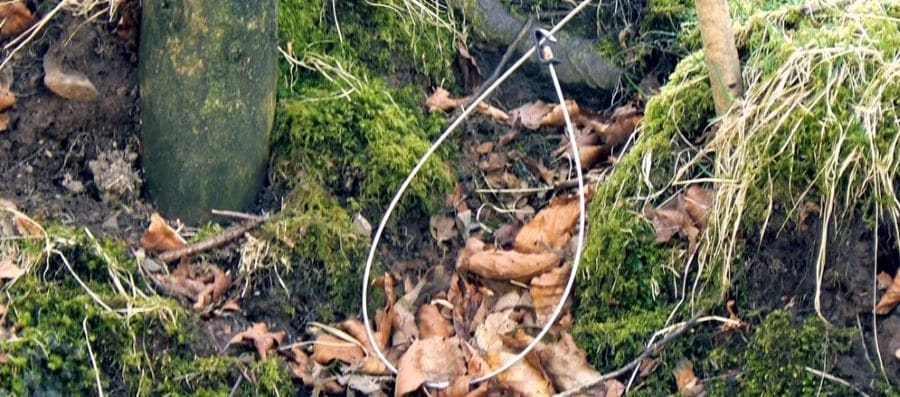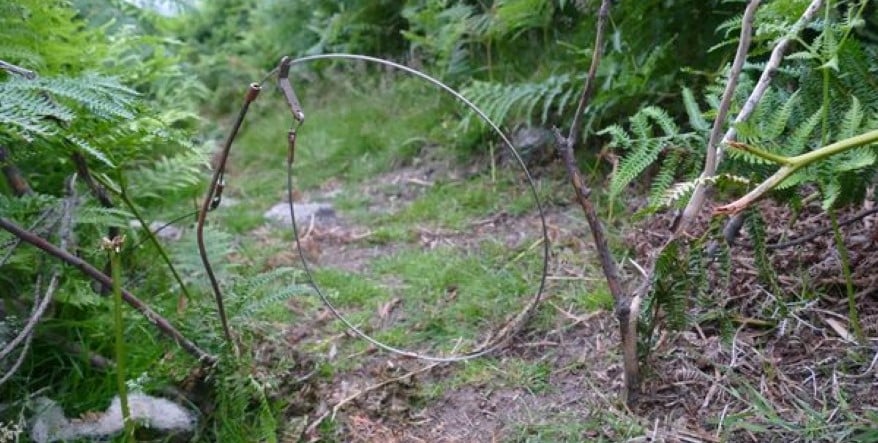SNARES
Snares have been used for thousands of years to trap animals. A fairly simple but inherently cruel design, snares are essentially a loop set along a trail or suspended from a branch or small tree which catches an animal by the neck or leg as they walk into it. As the animal continues to move forward or struggles to get free, the loop pulls tight. If the snare is strong enough (so doesn’t snap) or can’t be dragged away, the animal will suffocate, their neck will dislocate, or they will be held where they were caught and then beaten to death or shot.

Snares are banned in most European countries, but free-running snares are still legal in England and Northern Ireland. Wales passed a ban in summer 2023, and in March 2024 the Wildlife Management and Muirburn (Scotland) Bill was passed into law in March 2024 making it “an offence to use a snare to trap a wild animal, or in any way that is likely to injure a wild animal”.
Foxes, rabbits, and Brown Hares are allowed to be caught as so-called ‘target animals’ (note that Scotland already had a closed season for killing Brown Hare from 1st Feb – 30th Sept).
The use of snares is covered by a Code of Practice, but otherwise snaring is subject to lawful restrictions under the Wildlife and Countryside Act 1981 which makes it an offence to set in position any trap or snare which is intended to cause bodily injury to any wild animal or to use a trap or snare for the purpose of killing such a wild animal included in Schedule 6 of the 1981 Act – ie so-called ‘non-target’ protected species like Badger, Otter, Red Squirrel, Hedgehog, Pine Marten and Polecat. The snaring of any protected species is not permitted unless that person has been issued a specific licence under section 16 of the 1981 Act.
This also means that snares must NOT be set near rivers used by Otters or near Badger setts (or along runs used by Badgers near setts).

Stink pits
Snares and the Law
Snares Petition
Protect the Wild wants a full ban on snares
Now that we know about snares, we need to talk to family and friends about them.
- Explain that snares are banned across most of Europe but are still allowed in parts of the UK because the shooting industry wants them
- Explain that the shooting industry is partly responsible for creating ‘the problem’ they claim needs ‘managing’ with snares. The industry actually supports predator populations by releasing millions of birds in to the countryside every year.
- That the so-called ‘welfare considerations’ put in place by the shooting industry don’t reflect real-life scenarios and certainly not how wild animals behave when they’re caught in traps.
